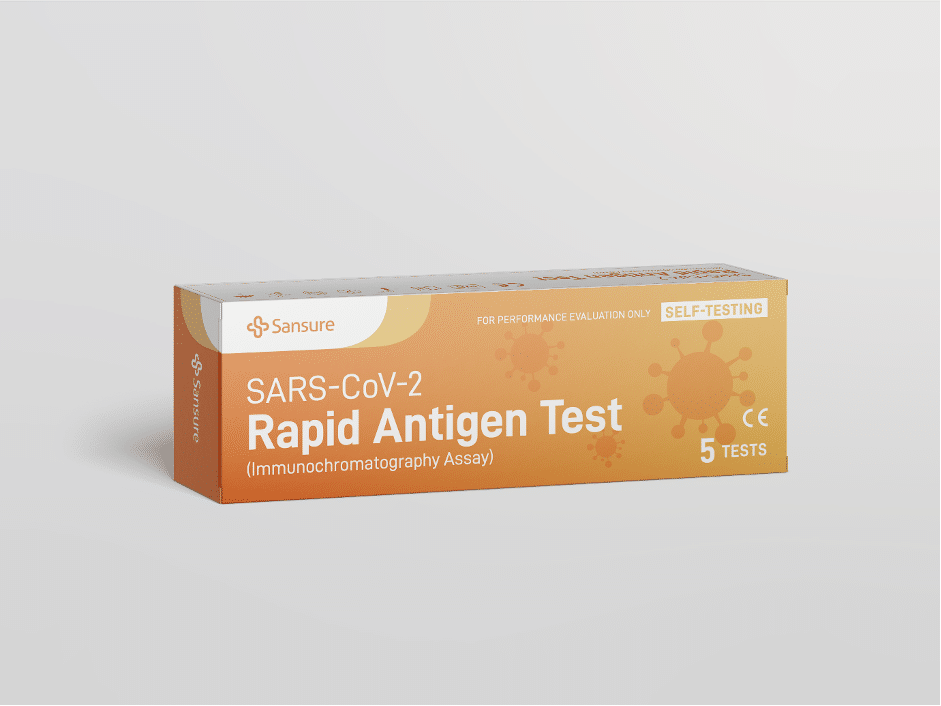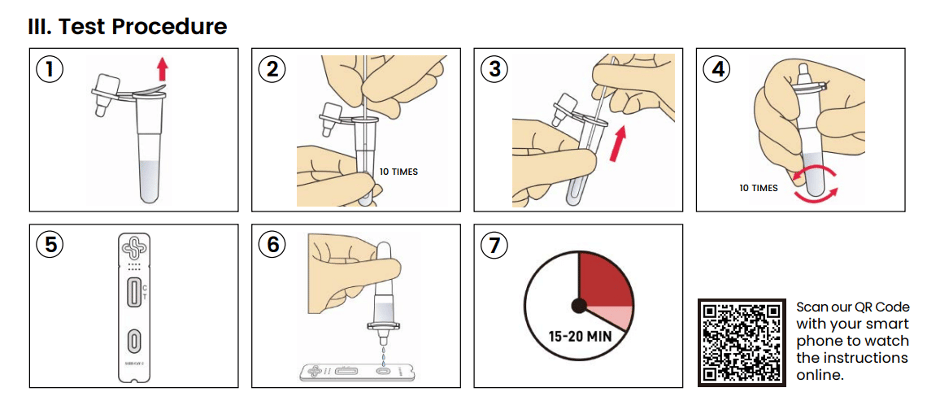After the pandemic, everyone is cautious about the hidden signs and symptoms of COVID infection. If you detect a minor alarming symptom of COVID-19, an immediate self test for COVID-19 is advised to determine if you are actually infected with it and, more importantly, what you should do next. Better even, you don’t have to go to a hospital or clinic to get the result. A rapid self test kit for COVID-19 can always help you to get the result at home, saving you the trouble and potential risks of other infections during your visit to the hospital.
What is Rapid Self Test?
Also known as an “at-home test” “over-the-counter (OTC) test” or simply “home test”, self test is used to detect the current status, showing results for COVID-19 infection within a few minutes. Users are not required to possess too much professional knowledge to conduct the test for themselves or their loved ones, as long as they follow the instruction strictly in using the rapid self-test kit for COVID-19.
When Should You Do a Rapid Self Test?
Keeping ourselves and our loved ones safe is our basic responsibility. The prevailing COVID-19 disease can be controlled by adopting some simple safety measures. One of them is testing yourself for infection by using an easy-to-use rapid self-test kit.
You should test yourself:
- If you notice any COVID-19 symptoms even after vaccination.
- If you recently have closed contact i.e. within 2 meters distance, for about 15 minutes, with someone having confirmed a Covid-19 infection [1].
- If you have attended any event without social distancing, you could be at a risk to get an infection.
- If your healthcare provider advises you.
- Before going to a gathering, on a vacation, or before traveling to another place or city.
The rapid self-test detects the presence of the virus in your respiratory system, so you can isolate yourself before infecting others.
Where to Get the Best Rapid Self Test Kit?
Most rapid self test kits are available online and offline in pharmacies and retail stores. Please check the local health departments to see if any free tests may be available.

The Sansure S3120E-H-SARS-CoV Rapid Antigen Test (Immunochromatography Assay) is a test kit for self-testing developed by Sansure, a recognized in vitro diagnostics provider. With its leading technologies and recognized flu test kit supply, Sansure has provided more than 500 products for innovative and easy-to-use diagnostics. This Rapid Antigen Test is an authorized test kit designed for home use. Some of its distinguishing features are:
1. User-friendly
It is a user-friendly rapid self-test kit that ensures accuracy with 94.55% sensitivity and 100% specificity.
2. Convenient
You can operate Sansure rapid self-test kit very conveniently with no additionally required apparatus to conduct your test.
3. Get your result fast
Your result will be achieved within only 15-20 minutes, unlike the laboratory tests which take a few days to conclude the presence of COVID-19 infection.
4. Flexibility
The test kit is easy to carry and operate, you can do your self-test anywhere with flexibility.
How to do a rapid-self test for COVID-19 by using a rapid antigen test kit?
Most of the rapid self tests can be conducted by following 4 simple steps, take Sansure’s SARS-CoV-2 Rapid Antigen Test for an example:
1. Wash your hands
You should clean your hands by washing them with water or by using a sanitizer. Your hands should be dry and clean before starting the procedure.
2. Prepare for the test

Prepare the apparatus to start the test. Take the components out of the kit and identify them. Each rapid antigen test kit contains one of the following items:
- SARS-CoV-Antigen test cassette
- SARS-CoV Sample extraction buffer
- Swab
- plastic waste bag
3. Collection of samples
A swab is present in a plastic wrap; take the swab out without touching its head. Now without any delay insert that swab into the left nostril for about 2.0 cm deep. Rotate your swab at least 5 times to get a sufficient specimen. Now use the same swab in the right nostril and repeat the same procedure.

4. Test procedure
- Carefully, use the kit and follow the procedure at room temperature.
- Now take the tube of extraction buffer and tear its seal after collection of the specimen on the swab.
- Place the swab with the specimen into the buffer tube.
- Stir the swab into the tube’s liquid 10 times.
- Hold and now squeeze out the sample extraction buffer from the swab, and remove it from the buffer tube.
- Now close the cap of the extraction sample tube and gently shake it 10 times. Never turn it upside down.
- Now take the SARS-CoV antigen test cassette from the packing and place it on a flat surface.
- Add 3 drops of liquid from the buffer tube on the sample window on the cassette.
- Observe results after 15-20 minutes.

Interpretation of Test Result
- Positive: If two red-colored lines, however faint or un-uniform they are, appearing at both test line (T) area and control line (C) area, the test result should be interpreted as a positive result.
- Negative: If only one red-colored line is observed at control line (C) area, it means SARS-CoV-2 antigen is not detected. However, it should be noted that negative test result does not eliminate the possibility of SARS-CoV-2 infection, the viral culture or a molecular assay is recommended to further confirm the case, if necessary.

What to Do if the Result is Positive?
Positive results indicate you are infected, but there’s no need to panic. Please follow social distancing and other guidelines, and, preferably, contact your local healthcare department or GP immediately for further instruction.
